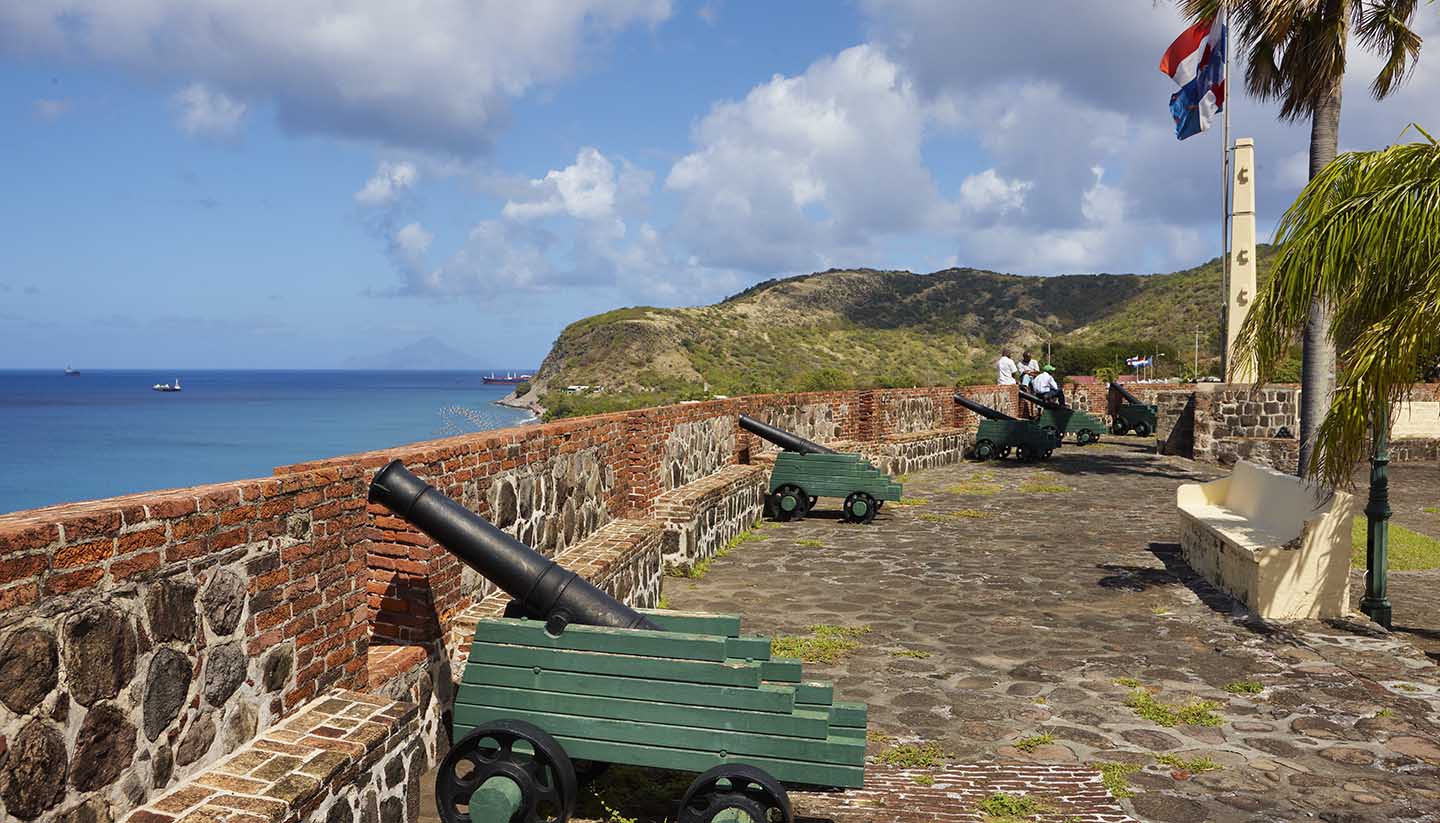St Eustatius History, Language and Culture
History of St Eustatius
Although Christopher Columbus sighted the island in 1493, St Eustatius was not settled until the 17th century as the Dutch consolidated their Caribbean empire based on Curaçao. Within 100 years, it was the most important transhipment port in the New World, visited by as many as 3,000 ships a year, up to 200 of which could be anchored at one time.
The island has changed hands 22 times since settlement, with the French, Spanish and British ever eager to wrest it from the Dutch. It was an important supply port for American settlers during the War of Independence; indeed, the Dutch administration of St Eustatius was the first state to recognise the United States of America, on 16 November 1776.
This act provoked the British to send a fleet under Admiral Rodney to exact revenge and in 1781 the island was virtually laid bare by British guns. Rebuilt by the Dutch, it continued to be an important trading centre until the advent of larger ships sent it into obscurity.
As part of the now disbanded Netherlands Antilles, St Eustatius (also known as Statia) gained partial independence from the Netherlands in 1954, but the issue of the Antilles' constitutional status never left the political agenda and although in 1994 the islands voted to retain the Netherlands Antilles the arrangement was not a happy one.
Following more referendums a 2005 conference resolved to grant autonomy to Curaçao and St Maarten and integrate Bonaire, St Eustatius and Saba into the Netherlands as special municipalities.
Did you know?
• There has been a Jewish population on St Eustatius since 1660.
• The Quill, a dormant volcano to the southeast, is the second highest mountain in the Netherlands.
• Fort Oranje is the island’s oldest building, dating from the 17th century.
St Eustatius Culture
Religion in St Eustatius
The majority are Protestant with a Roman Catholic minority.
Social Conventions in St Eustatius
Dutch customs are still important throughout the former Netherlands Antilles, but US influences from the Virgin Islands nearby are dominant on St Eustatius. It is conventional to shake hands on meeting someone. Dress is casual and lightweight cottons are advised. Bathing suits should be confined to the beach and poolside areas only. It is common to dress up in the evening.
Language in St Eustatius
Dutch is the official language. Papiamento (a mixture of African, Dutch, English, Portuguese and Spanish) is the commonly used lingua franca. English and Spanish are also widely spoken.


